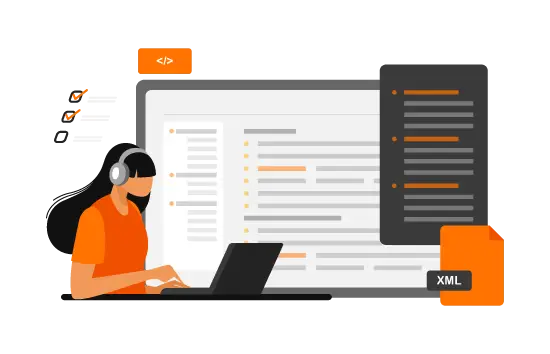Understanding the Basics of Extensible Markup Language (XML)
In today’s digital world, data is constantly changing and evolving. As a result, it’s crucial to have a way to organize and categorize data to make it more accessible and understandable. This is where XML comes in. Extensible Markup Language (XML) is a markup language that allows for the creation of customized tags and data structures to organize and categorize data.
In this blog post, we’ll explore the basics of XML and its importance in the world of computer science.
How does XML work?
XML uses tags to categorize and organize data. These tags, like HTML tags, define the structure and content of the data. However, while HTML is designed to display data on a webpage, XML is more focused on organizing data behind the scenes. XML allows for the definition of customized tags, which can be used to categorize data in a way that makes sense for a specific project or application.
What are the benefits of using XML?
One of the biggest benefits of using XML is its flexibility. Since it allows for customized tags and data structures, XML can be used in a wide range of applications and projects. Additionally, XML is easily readable by both humans and machines, which makes it more accessible to people who may not be familiar with coding and markup languages.
Another benefit of XML is its extensibility. As new data structures and tags are needed, they can be easily added to the XML file without breaking existing code or data structures. This makes XML an ideal solution for projects that require flexibility and scalability.
How is XML used in real-world applications?
XML is used in a wide range of applications, from web development to data storage and analysis. In web development, XML is often used to store and transfer data between web applications. Additionally, XML is commonly used in the healthcare industry to store and transfer patient data between medical professionals and organizations.
What are some common misconceptions about XML?
One common misconception about XML is that it is only useful for web development. While XML is certainly used in web development, it is also used in a wide range of other applications, from healthcare to finance to engineering. Another misconception is that XML is difficult to learn and use. While XML can be complex, there are many tools and resources available to help developers learn and use XML effectively.
How can I start using XML?
If you’re interested in using XML in your own projects, there are many resources available to help you get started. Online tutorials, books, and courses can all be helpful in learning the basics of XML and its applications. Additionally, there are many tools and software programs available that can help you create and work with XML files.
Conclusion
XML is a powerful and flexible markup language that has a wide range of applications in today’s digital world. By understanding the basics of XML and its benefits, you can start leveraging this technology in your own projects. Whether you’re a web developer or a medical professional, XML can help you organize and categorize data in a way that makes sense for your specific needs. So why not start exploring the world of XML today?
